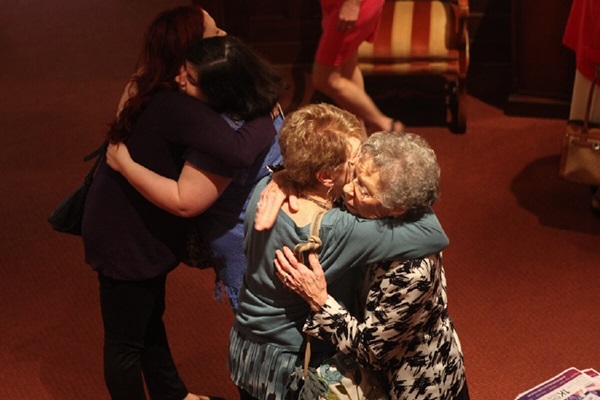Many United Methodist congregations find themselves in a season of pain and grief. Whether this is because of a tense discernment process regarding disaffiliation or division caused by a close disaffiliation vote, providing intentional opportunities for healing will help the local church move forward.
Both clergy and lay leaders can begin the healing process with these steps:
1. Amplify a unifying message
Remind congregants who The United Methodist Church truly is as a worldwide connection. It is strong and enduring because each of us is a part of it. On social media and in e-newsletters, share links to UMC.org content that will help members regain their understanding of what we believe and how we serve.
In worship and other gatherings, show inspiring videos, such as:
- We are the church. Together. Let’s #BeUMC
- Reclaim. Revive. Renew. The future of The United Methodist Church
- Let’s step forward. Together. (three-part series)
2. Share stories
Ask several church members who are committed to remaining United Methodist to share their personal testimonies as to why they are staying, what roots they have at your church, how its ministries are vital in the community, and why they are proud to be a part of the denomination's ongoing work around the world.
These testimonies could be shared in worship, as social media videos, as written letters to those who are considering leaving the church, as e-newsletter content, or as short audio messages sent via phone tree. Use any and all communication methods to be sure everyone receives these important messages.
Find ideas by exploring examples of testimonies that have been shared during the #BeUMC campaign.
3. Stir core memories
Don't be shy about pulling on some heartstrings! Remind people of why they joined your church in the first place and why they are United Methodist. Be inspired by the articles “Look back, give thanks, move forward” and “Re-engage in the mission of the church.”
Host a time of prayer and remembrance. Play favorite hymns, lead the group through a time of prayer for the congregation and allow space for quiet contemplation. Throughout, ask people to think about the day they joined the church, the friends they met there, special events and occasions that have taken place in the church, and pastors and leaders who provided guidance.
Allow time for grieving as people remember the past, then invite them to turn toward the future with a spirit of hope. At the end of the gathering, ask each person to think of three people who nurtured their faith journey, and then to think of three young people who need their spiritual witness and care.
4. Find common ground
Make a list of activities that your congregation has always enjoyed doing together, such as sharing a potluck meal or serving the community during a day of missions. Whatever these events might be, plan them and encourage participation from everyone. Ask people to make an effort to rekindle relationships based on shared history, calling and faith.
If a set aside time for listening and learning would benefit your congregation, consider utilizing Courageous Conversations resources from Discipleship Ministries. The tools support ongoing dialogue through honest small-group conversations that will deepen congregants’ understandings of each other.
5. Use resources
Throughout your journey of congregational healing, turn to the many additional tools that are available to support you:
- #BeUMC resources for leaders
- Slide presentation, discussion guide, sermon series and worship ideas
- #BeUMC information for church members
- Committed to The UMC information
- Resources to help resist disaffiliation and fight misinformation
If you ever feel overwhelmed or alone, take heart. Know that fellow United Methodists are praying for you during this challenging time. Don’t hesitate to reach out to your district superintendent or conference office for support.
Laura Buchanan works at United Methodist Communications. Contact her by email.

